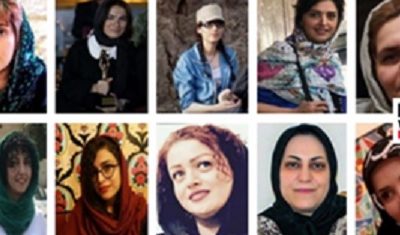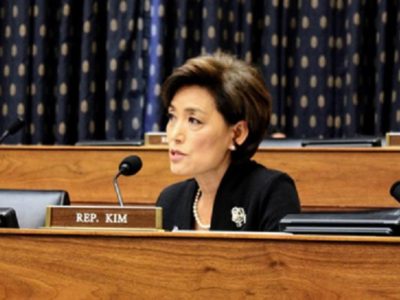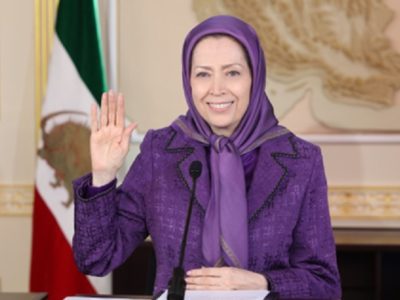By testing their ballistic missiles in a provocative act last month, Iran’s ayatollahs also tested the resolve of the new U.S. president. National Security Advisor Michael Flynn’s promise of swift action should violations continue has turned the Obama administration’s era of appeasement on its head, at least in spirit.
Given Tehran’s military saber-rattling, including a second missile launch this week and continued support for international terrorism, the time for action may come soon. There are a number of reasonable options for the Trump administration to turn up the heat without immediate, full-scale military engagement.
First, the U.S. should officially designate the regime’s terrorist arm, the Islamic Revolutionary Guard Corps (IRCG), as a foreign terrorist entity and ramp up targeted sanctions against it.
Not only is the IRGC, along with Iran’s Ministry of Intelligence, a crucial component in the regime’s crackdowns and human rights abuses at home, it functions as a regional terror production factory.
As Gen. Flynn acknowledged in his forceful denunciation of Iran’s destabilizing role in geopolitics, they have sown chaos throughout the Middle East by supporting the Houthis in Yemen, Bashar al-Assad in Syria, Shia militias in Iraq, and the Hezbollah in Lebanon, among others.
According to U.S. intelligence analysts and court rulings, the IRGC was directly involved in the bombings of the Jewish Community Center in Argentina and the Khobar Towers in Saudi Arabia, as well as in the development and deployment of roadside bombs that killed hundreds of American soldiers in Iraq.
The IRGC is embedded in a strictly-managed kleptocracy aimed at enriching those in power at the expense of the Iranian population. Controlling an enormous business empire consisting of key national industries, including energy and real estate, the ICRG is reaping the benefits of the lifting of sanctions by the Obama administration.
By tightening capital flows and sanctioning key IRGC personnel, the Trump administration can diminish some of Iran’s greatest threats to regional stability. It should also work with regional partners to marginalize and evict the regime’s forces and militias from Syria, Iraq, Lebanon, and other countries in the Middle East.
Strategically speaking, however, applying sanctions and confronting the export of terror is not sufficient. To effectively undermine and confront the regime, Washington needs to target Tehran’s most fundamental vulnerability — domestic instability.
The main enemies of the theocratic regime are the Iranian people, who yearn for a democratic, representative and secular government. Brutally suppressed by the mullahs for decades, they have risen up a number of times, including in 2009, when millions poured onto the streets to protest the velayat-e faqih (absolute clerical rule).
Trump’s initial Iran policy, including the imposition of new sanctions this month, has already been welcomed by the organized opposition movement, the National Council of Resistance in Iran (NCRI), a broad coalition of political groups and personalities committed to the Universal Declaration of Human Rights and a democratic, free, secular, and non-nuclear Iran.
The principal member, Mujahedin-e Khalq (MEK), exposed the regime’s clandestine nuclear program in 2002 for the first time, which triggered the IAEA inspections of Iran’s nuclear sites.
The MEK, which also exposed the terror network of the Iranian regime in the region, is considered an “enemy of state” by the mullahs, with thousands of its supporters having been brutally massacred.
Standing with the Iranian people as they strive for democratic change would give America greater leverage in dealing with Iran. In addition, it would signal an overdue shift in the approach and policy vis-à-vis the ruthless clerics, critical to curbing Tehran’s regional bullying and nuclear ambitions.
Dialogue and engagement by previous administrations had the opposite result.
Condemning Tehran’s human rights abuses at every turn, including at the U.N. Security Council, will send a clear message to the Iranian people that the era of the mullahs’ unchecked and malicious conduct in the region is over.
It will show that the United States is no longer turning a blind eye to the terror, and that those seeking a free, open, and democratic future for their nation are not alone.
As it partners with the Iranian people, the Trump administration must step away from the regime’s multimillion-dollar public relations apparatus, which has an unsettling grip on the imagination of the pundits and media inside the Beltway.
For years, Tehran apologists and lobbyists have staged the discussion under the cloak of realpolitik — options are limited to kissing the Ayatollah’s hand or engaging in all-out, nihilistic warfare.
It is a carefully curated, fear-driven propaganda campaign that glosses over a multitude of options and regime vulnerabilities. Keeping opposition groups and the Iranian people at arm’s length has been central to that misleading narrative.
The Iranian people have always welcomed the opportunity to forge a strategic alliance against the terrorist mullahs, to bring about the free and democratic Iran, the prerequisite to a secure and tranquil region.
A policy reset on Iran enables the new administration to make the change that will facilitate democratic change in Iran, and that will make the world a safer place.
Ali Safavi (@amsafavi) is a member of the Foreign Affairs Committee of the National Council of Resistance of Iran (NCRI) and president of Near East Policy Research, a research and policy analysis firm in Washington, D.C.









